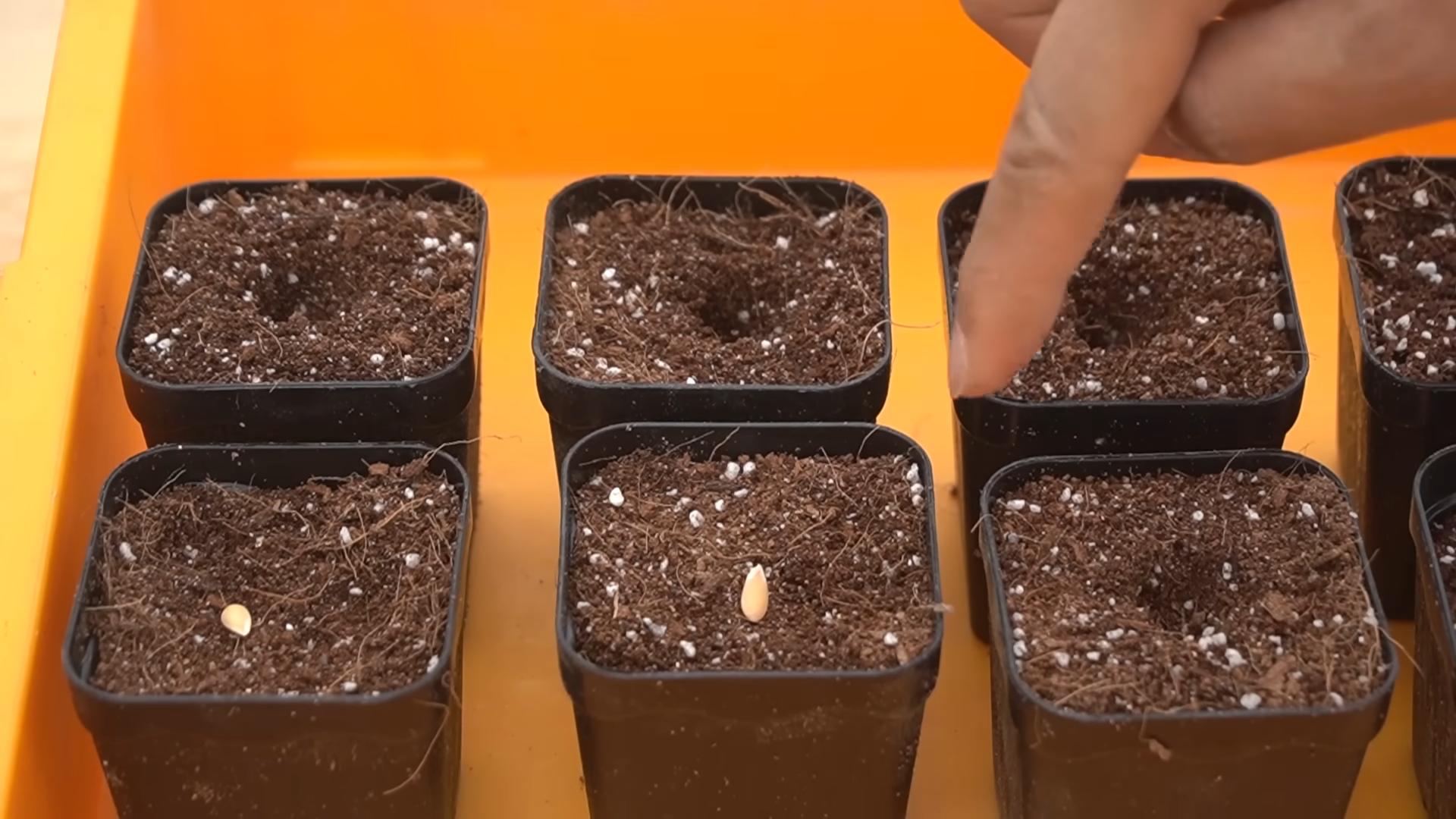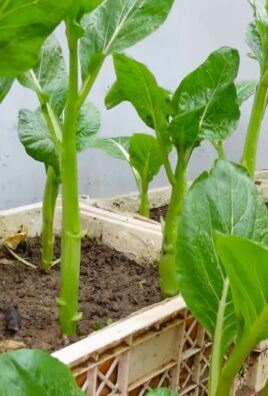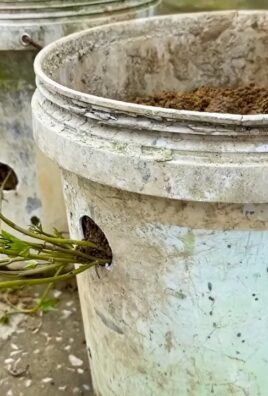Growing Melons Beginners, listen up! Have you ever dreamed of biting into a juicy, sun-ripened melon, bursting with flavor, that you grew yourself? I know I have! There’s something incredibly satisfying about nurturing a plant from seed to delicious fruit, and melons are no exception. For centuries, melons have been cultivated around the world, from the ancient Egyptians who revered them as symbols of prosperity to the vibrant marketplaces of Asia where they are still a staple.
But let’s be honest, the thought of growing melons beginners can be a little intimidating. They seem to require a lot of space and specific conditions. That’s where this DIY guide comes in! I’m going to share some simple, yet effective tricks and hacks that will empower you, even if you’re a complete newbie, to successfully grow your own mouthwatering melons.
Imagine skipping the grocery store and heading straight to your backyard for the freshest, most flavorful melons you’ve ever tasted. Not only will you save money, but you’ll also have the satisfaction of knowing exactly where your food comes from and that it’s free from harmful chemicals. Plus, gardening is a fantastic way to relieve stress and connect with nature. So, are you ready to embark on this exciting journey? Let’s get started!

Growing Melons: A Beginner’s Guide to Sweet Success
Okay, so you want to grow melons? Awesome! I’m here to tell you, it’s totally doable, even if you’re a newbie gardener. Melons are delicious, rewarding, and surprisingly fun to cultivate. This guide will walk you through everything you need to know to get started, from choosing the right variety to harvesting your juicy prize. Let’s get our hands dirty!
Choosing Your Melon Variety
First things first, you need to decide what kind of melon you want to grow. There are so many options, and it can be a little overwhelming. Here’s a breakdown of some popular choices:
* **Watermelon:** The classic summer treat! Watermelons need a lot of space and sunshine. Consider smaller “icebox” varieties like Sugar Baby if you have limited space.
* **Cantaloupe:** Sweet and fragrant, cantaloupes are a garden staple. They’re a bit easier to grow than watermelons and come in various sizes.
* **Honeydew:** Known for its smooth, pale green flesh, honeydew melons are refreshing and subtly sweet.
* **Galia Melon:** A cross between a cantaloupe and a honeydew, Galia melons have a unique flavor and a distinctive netted rind.
* **Specialty Melons:** Don’t be afraid to experiment! There are tons of unique melon varieties out there, like Crenshaw, Casaba, and Korean melons. Check your local garden center for interesting options.
Consider your climate and growing space when choosing your variety. Some melons need a longer growing season than others.
Preparing Your Garden Bed
Melons are hungry plants, so soil preparation is key. They need well-drained soil that’s rich in organic matter.
* **Sunlight:** Melons need at least 6-8 hours of direct sunlight per day. Choose a spot in your garden that gets plenty of sunshine.
* **Soil Testing:** It’s always a good idea to test your soil to determine its pH and nutrient levels. Melons prefer a slightly acidic to neutral pH (6.0-7.0).
* **Amending the Soil:** Amend your soil with plenty of compost, aged manure, or other organic matter. This will improve drainage, fertility, and water retention.
* **Raised Beds:** If your soil is heavy clay or poorly drained, consider growing your melons in raised beds. This will help prevent root rot.
* **Spacing:** Melons need plenty of space to spread out. Watermelons need the most space (4-6 feet between plants), while cantaloupes and honeydews can be planted closer together (2-3 feet between plants).
Starting Your Melon Seeds
You can either start your melon seeds indoors or direct sow them in your garden. Starting them indoors gives you a head start, especially if you live in a cooler climate.
* **Starting Indoors:**
1. **Timing:** Start your seeds 4-6 weeks before the last expected frost.
2. **Containers:** Use peat pots or biodegradable containers to avoid disturbing the roots when transplanting.
3. **Soil:** Use a seed-starting mix that’s light and well-draining.
4. **Planting:** Plant the seeds about 1 inch deep.
5. **Watering:** Keep the soil moist but not soggy.
6. **Warmth:** Melons need warmth to germinate. Use a heat mat to keep the soil temperature around 80-85°F (27-29°C).
7. **Light:** Once the seedlings emerge, provide them with plenty of light. Use grow lights or place them in a sunny window.
8. **Hardening Off:** Before transplanting your seedlings outdoors, you need to harden them off. This means gradually exposing them to outdoor conditions over a period of 7-10 days. Start by placing them in a sheltered spot for a few hours each day, gradually increasing the amount of time they spend outdoors.
* **Direct Sowing:**
1. **Timing:** Direct sow your seeds after the last expected frost, when the soil temperature has warmed to at least 70°F (21°C).
2. **Planting:** Plant the seeds about 1 inch deep.
3. **Watering:** Keep the soil moist until the seeds germinate.
4. **Thinning:** Once the seedlings emerge, thin them to the recommended spacing.
Transplanting Your Melon Seedlings
Once your seedlings have developed a few true leaves and the weather has warmed up, it’s time to transplant them into your garden.
1. **Choose a Cloudy Day:** Transplanting on a cloudy day will help prevent transplant shock.
2. **Prepare the Planting Hole:** Dig a hole that’s slightly larger than the root ball of the seedling.
3. **Gently Remove the Seedling:** Carefully remove the seedling from its container, being careful not to damage the roots. If you used peat pots, you can plant the entire pot.
4. **Plant the Seedling:** Place the seedling in the hole and backfill with soil.
5. **Water Thoroughly:** Water the seedling thoroughly after planting.
6. **Mulch:** Apply a layer of mulch around the plant to help retain moisture and suppress weeds.
Caring for Your Melon Plants
Melons need consistent care to thrive. Here’s what you need to do:
* **Watering:** Melons need plenty of water, especially during hot, dry weather. Water deeply and regularly, aiming for about 1-2 inches of water per week. Avoid overhead watering, as this can promote fungal diseases. Drip irrigation is a great option for watering melons.
* **Fertilizing:** Melons are heavy feeders, so they need regular fertilization. Use a balanced fertilizer (e.g., 10-10-10) every 2-3 weeks. You can also side-dress your plants with compost or aged manure.
* **Weeding:** Keep your melon patch free of weeds. Weeds compete with melons for water and nutrients.
* **Pest Control:** Melons can be susceptible to various pests, such as aphids, squash bugs, and cucumber beetles. Inspect your plants regularly for pests and take action if necessary. You can use insecticidal soap, neem oil, or other organic pest control methods.
* **Disease Control:** Melons can also be susceptible to fungal diseases, such as powdery mildew and downy mildew. Prevent these diseases by providing good air circulation, avoiding overhead watering, and using disease-resistant varieties. If you notice signs of disease, treat your plants with a fungicide.
* **Pollination:** Melons need to be pollinated to produce fruit. Bees are the primary pollinators of melons. Attract bees to your garden by planting flowers that they love. If you’re not seeing enough bees, you may need to hand-pollinate your melons. To hand-pollinate, use a small paintbrush to transfer pollen from the male flowers to the female flowers. Female flowers have a small fruit at the base, while male flowers do not.
Training Your Melon Vines
Melon vines can get quite long and unruly. Training them can help keep your garden tidy and improve air circulation.
* **Trellising:** Trellising is a great way to save space and keep your melons off the ground. Use a sturdy trellis that can support the weight of the melons. Train the vines to grow up the trellis by tying them to it with twine or plant clips.
* **Pruning:** Pruning can help improve air circulation and encourage fruit production. Remove any dead or diseased leaves and stems. You can also prune the tips of the vines to encourage branching.
* **Supporting the Fruit:** As the melons grow, they may need support to prevent them from breaking off the vine. Use slings made from pantyhose or netting to support the fruit.
Harvesting Your Melons
Knowing when to harvest your melons is crucial for getting the best flavor. Here are some tips:
* **Watermelons:**
* **Thump Test:** Thump the watermelon. A ripe watermelon will sound hollow.
* **Ground Spot:** The ground spot (the spot where the watermelon rested on the ground) should be yellow or cream-colored.
* **Tendril:** The tendril closest to the watermelon should be brown and dry.
* **Cantaloupes:**
* **Aroma:** A ripe cantaloupe will have a sweet, musky aroma.
* **Stem Slip:** The stem should slip easily from the melon when it’s ripe.
* **Color:** The rind should be a golden-tan color.
* **Honeydews:**
* **Aroma:** A ripe honeydew will have a slightly sweet aroma.
* **Blossom End:** The blossom end (the end opposite the stem) should be slightly soft and springy.
* **Color:** The rind should be a creamy white color.
Harvest your melons in the morning, when they’re at

Conclusion
So, there you have it! Growing melons, even for beginners, doesn’t have to be an intimidating endeavor. With a little planning, patience, and this simple DIY trick, you can transform your garden into a melon haven, bursting with sweet, juicy goodness. This method, focusing on [mention the specific DIY trick from the main article here, e.g., “creating a raised bed with amended soil” or “using black plastic mulch”], offers a significant advantage in terms of soil warmth, drainage, and weed control, all crucial factors for successful melon cultivation.
Why is this a must-try? Because it drastically increases your chances of a bountiful harvest, even if you’re a complete novice. Melons are notoriously finicky, demanding specific conditions to thrive. This DIY approach addresses those needs head-on, providing a supportive environment that encourages strong root development and vigorous growth. Imagine biting into a perfectly ripe, homegrown watermelon, cantaloupe, or honeydew – the satisfaction is unparalleled!
But don’t stop there! Feel free to experiment with different melon varieties. Watermelons are always a crowd-pleaser, but consider trying smaller, personal-sized melons like Sugar Baby or even venturing into the world of specialty melons like Galia or Charentais. You can also adjust the DIY trick to suit your specific garden conditions. If you live in a particularly hot climate, consider using a lighter-colored mulch to prevent overheating. If your soil is naturally rich, you might need less amendment. The key is to observe your plants and adapt accordingly.
We’ve found that adding a trellis system for smaller melon varieties can also be incredibly beneficial, especially in smaller gardens. This keeps the fruits off the ground, preventing rot and maximizing space. Another variation is to incorporate companion planting. Marigolds, for example, are known to deter pests, while basil can improve the flavor of your melons.
Ultimately, the best way to learn is by doing. Don’t be afraid to get your hands dirty and experiment. Growing melons is a rewarding experience, and with this DIY trick as your foundation, you’re well on your way to a successful harvest. We are confident that you will be able to grow melons successfully.
Now, we want to hear from you! Give this DIY trick a try and share your experiences in the comments below. What melon varieties did you grow? What challenges did you face, and how did you overcome them? Your insights can help other beginners on their melon-growing journey. Let’s create a community of melon enthusiasts, sharing tips and celebrating our successes together! We are excited to see your results.
Frequently Asked Questions (FAQ)
What are the best melon varieties for beginners?
That’s a great question! For beginners, we recommend starting with easier-to-grow varieties like ‘Sugar Baby’ watermelon, ‘Athena’ cantaloupe, or ‘Honey Dew Green Flesh’ honeydew. These varieties are known for their disease resistance and relatively short growing season, making them ideal for those new to melon cultivation. They are also widely available at most garden centers. Remember to check the specific growing requirements for each variety, as they may vary slightly.
How much sun do melons need?
Melons are sun-worshippers! They require at least 6-8 hours of direct sunlight per day to thrive. Without sufficient sunlight, the fruits will be small, and the flavor will be bland. Choose a location in your garden that receives full sun throughout the day. If you live in a particularly cloudy area, you might consider using grow lights to supplement the natural sunlight.
What kind of soil is best for growing melons?
Melons prefer well-drained, fertile soil with a pH between 6.0 and 6.8. Amend your soil with compost or well-rotted manure to improve drainage and add nutrients. Avoid heavy clay soils, as they can become waterlogged and lead to root rot. If you have clay soil, consider growing your melons in raised beds or containers. The DIY trick mentioned earlier often involves amending the soil within a raised bed, providing the perfect growing medium.
How often should I water my melon plants?
Melons need consistent watering, especially during fruit development. Water deeply and regularly, aiming to keep the soil consistently moist but not waterlogged. Avoid overhead watering, as this can promote fungal diseases. Drip irrigation or soaker hoses are ideal for delivering water directly to the roots. As the fruits ripen, you can reduce watering slightly to concentrate the sugars and improve the flavor.
How do I know when my melons are ripe?
Determining ripeness can be tricky, but there are a few telltale signs. For watermelons, look for a dull, thumping sound when you tap the fruit. The underside of the melon, where it rests on the ground, should also turn from white to yellow. For cantaloupes, the stem should slip easily from the fruit when it’s ripe. Honeydew melons are ripe when they have a slightly waxy feel and a sweet aroma. Experience is the best teacher, so don’t be afraid to experiment and learn from your mistakes.
What are some common pests and diseases that affect melons?
Melons can be susceptible to various pests and diseases, including aphids, squash bugs, vine borers, powdery mildew, and fusarium wilt. Regularly inspect your plants for signs of infestation or disease. Use organic pest control methods, such as insecticidal soap or neem oil, to control pests. Ensure good air circulation to prevent fungal diseases. Choose disease-resistant varieties whenever possible. Crop rotation can also help to prevent soilborne diseases.
Can I grow melons in containers?
Yes, you can grow melons in containers, but you’ll need to choose smaller varieties and use a large container (at least 20 gallons). Make sure the container has drainage holes and use a high-quality potting mix. You’ll also need to provide support for the vines, such as a trellis or stake. Container-grown melons will require more frequent watering and fertilization than those grown in the ground.
How do I fertilize my melon plants?
Melons are heavy feeders and benefit from regular fertilization. Use a balanced fertilizer (e.g., 10-10-10) at planting time and then side-dress with a nitrogen-rich fertilizer when the vines begin to run. Avoid over-fertilizing, as this can lead to excessive foliage growth and reduced fruit production. Follow the instructions on the fertilizer label carefully.
What is the best way to store harvested melons?
Store ripe melons in the refrigerator to prolong their shelf life. Whole melons can be stored for up to a week, while cut melons should be consumed within a few days. Wrap cut melons tightly in plastic wrap to prevent them from drying out.
How can I prevent blossom-end rot in my melons?
Blossom-end rot is a common problem in melons, caused by a calcium deficiency. To prevent blossom-end rot, ensure your soil has adequate calcium levels. You can amend your soil with lime or bone meal before planting. Also, maintain consistent watering to prevent fluctuations in soil moisture, which can interfere with calcium uptake.




Leave a Comment